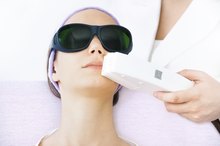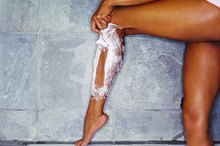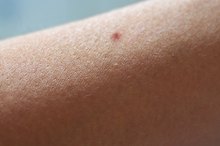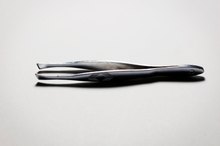How to Permanently Remove Hair on the Legs
Unwanted leg hair can make you feel self-conscious about your legs, especially if there are many. There are several ways to remove leg hair, such as sugaring, waxing and shaving. However, these methods are not permanent and take a long time to do. Fortunately, there are other methods to treat and permanently remove unwanted hair from your legs.
Use the a prescription cream that contains eflornithine HCl to permanently eliminate unwanted hair on your legs 1. These creams work by inhibiting an enzyme that affects hair growth called ornithine decarboxylase (ODC). Consult your physician or dermatologist for more information.
Drugs to Prevent Hair Growth
Learn More
Undergo electrolysis to eliminate unwanted leg hair. This cosmetic technique involves inserting a thin wire into the hair follicles on your leg. An electric current is then passed into your skin to destroy the roots, and any loosened hair is then removed using tweezers. Consult a dermatologist or cosmetic surgeon about this procedure. You can also go to a health spa or beauty salon to get electrolysis done, however they will be unprepared to treat you if any skin irritations develop.
Undergo photoepilation. Photoepilation works by applying controlled flashes of light to your skin to destroy the hair follicles. It will take three to five sessions within a span of two to three months to ensure the results are permanent. This popular nonsurgical technique is performed by a cosmetic surgeon or dermatologist and is approved by the Food and Drug Administration.
Warnings
Methods such as depilatory creams, manual tweezing and waxing will not permanently remove hair, but they can slow it down.
Related Articles
References
- Vaniqa.com: Vaniqa (eflornithine HCl)
- "Winning the Battle Against Unwanted Hair Growth;" Laura M. Regan, CE, CMLT; 2006; Pg. 13
- TeensHealth from Nemours. Hair removal. Updated August 2016.
- National Organization for Rare Disorders. Trichotillomania.
- NIH MedlinePlus. Depilatory poisoning. Updated April 9. 2020.
- Michigan Medicine. Electrolysis for removing hair. Updated October 30, 2019.
- American Academy of Dermatology. Laser hair removal: FAQs.
- USFDA. Vaniqa™. Updated July 27, 2000.
- Hamzavi I, Tan E, Shapiro J, Lui H. A randomized bilateral vehicle-controlled study of eflornithine cream combined with laser treatment versus laser treatment alone for facial hirsutism in women. J Am Acad Dermatol. 2007;57(1):54-9. doi:10.1016/j.jaad.2006.09.025
- Hamzavi, I., Tan, E., Shapiro, J., Lui, H. (2007). A randomized bilateral vehicle-controlled study of eflornithine cream combined with laser treatment versus laser treatment alone for facial hirsutism in women. J Am Acad Dermatol, Jul, 57, 1, 54-9.
- Wanitphakdeedecha, R., Alster, T.S. (2008). Physical means of treating unwanted hair. Dermatol Ther, Sep-Oct, 21, 5, 392-401.
Writer Bio
Frank Dioso is a trained medical technologist working for prominent research institutions such as Quest Diagnostics and California Clinical Trials. He has, for many years, ghostwritten clinical trial reports for confidential pharmaceutical drugs and is currently contributing his clinical laboratory science knowledge to online how-to articles.









